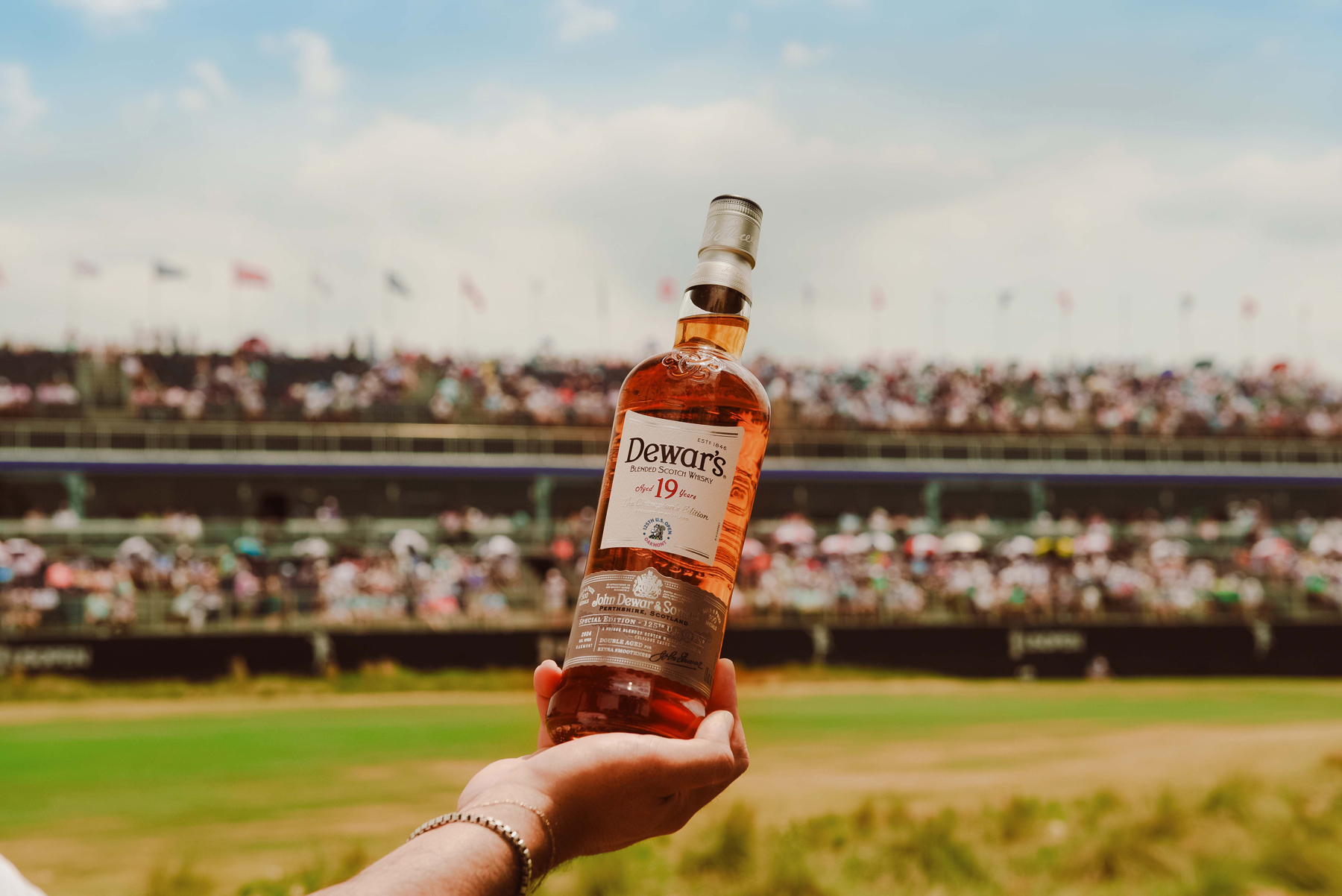
More than half a million golfers visit Ireland each year, a significant number of them from the United States. Some are oblivious to the historic rivalries that shape the island socially and culturally, but nearly all are keen to debate the merits of the courses on offer across the various regions. With the Ryder Cup match at the K Club in our rearview mirrors, Paul Trow looks at the game that knows no boundaries, as played by some of the friendliest people on Earth. Welcome, then, to Irish golf.
Golf Photography by Evan Schiller / golfshots.com
When intergalactic aliens finally visit our planet, it won’t be long before they’re scratching their heads (or wherever their brains are kept) at the conflicts humans have created, and the north/south division of Ireland might puzzle them most of all.
Nowhere are the natives friendlier and more blessed with a sense of humor than on the Emerald Isle, one of the most fitting monikers ever. “The craic,” as Ireland’s general culture of sociability is called, does indeed bind people together across the generations and factions. And yet… Well, four centuries of sociopolitical/religious/territorial conflicts don’t get resolved overnight.
The whole island is a mirrored paradox—a place with more than enough room and hospitality to go round, and yet nowhere to hide, a kind of small-town atmosphere even in the wide-open spaces. Ireland’s attributes are remarkable, from a hauntingly brawny coastline, a mastery of brewing and distilling, and exceptional musical and literary creativity to the ideal climate for livestock and crop farming, and a wide range of banking facilities and acumen And then there’s the golf.

As far as golf in Ireland is concerned, there is no north and south divide. The game across the entire island falls under the jurisdiction of the Golf Union of Ireland (for men) and the Irish Ladies’ Golf Union. The only borders the GUI and ILGU recognize, for tournament and match purposes, are between its 410 courses, 32 counties and four provinces: Leinster, Munster, Connacht and Ulster.
Nothing in Irleand, not even the remotest cove or lighthouse, is further than a few miles from a golf course. For this reason, and for the fact that visitors, almost without exception, are universally welcome, we’ll discuss the golf possibilties in geographic terms even as we leave any hint of conflict at the clubhouse door. After all, whatever your politics, there’s no arguing with a beautiful course, sunbeams cutting through the clouds to fall on verdant fairways and a pint of Guinness at No.19.
Several travel companies specialize in transporting American golfers across the Atlantic, many on a pilgrimage to their ancestral homes. Managing director of one such, David McMahon, states he is constantly tweaking schedules to cater for his clients’ curiosities and desires.
“The southwest is by far the most popular with golfers, especially for the first time,” he says. “Not only because it’s so convenient in that it’s an easy flight from the east coast and a short drive to the courses, but also because of the incredible links there, such as Ballybunion, Lahinch and particularly [the Arnold Palmer-designed] Tralee.”
But with the [British] Open Championship returning in 2019 to the Dunluce Links at Royal Portrush after an absence of 68 years, he is acutely aware of the growing popularity of Northern Ireland. “The courses there are as good as any in the world,” he acknowledges. “What makes Ireland tours unique are the history that is prevalent everywhere, the panoramic views, especially over places like Donegal Bay, and the glorious surrounding countryside.”
Inevitably, these pan-Isle tours take in iconic landmarks like the Giant’s Causeway, a volcanic concoction of some 40,000 interlocking basalt columns near Portrush, the fabled Book of Kells and the verdant St. Stephen’s Green in Dublin, and the ocean-hugging Ring of Kerry and Dingle Peninsula in the southwest. The Blarney Stone and gourmet-famed town of Kinsale near Cork also feature on trips-of-a-lifetime.

For golfers, there is no better place to start than Tralee in County Kerry. In October 1984, after completing his commission to move the club from its previous incarnation at Mounthawk to the Barrow West promontory, Mr. Palmer declared: “I have never come across a piece of land so ideally suited to the building of a golf course. I may have designed the first nine, but surely God designed the back nine.”
From heaving sand dunes covered with wind-whipped Marram grasses to sheer cliffs that defy the oft-angry sea, Tralee can’t fail to bring out the poet in the saltiest of souls.
The club dates back to 1896 when nine holes were laid out on what is today a sports field. During the First World War, a Captain Lionel Hewson, hired to design a new course, became suspicious of the men who sat on the demesne walls watching him while he measured and made notes. He recorded that “bullets used to fly in those days on little provocation” and a Major McKinnon in the auxiliary division of the Royal Irish Constabulary was shot dead on the course in 1921 while playing golf.
But Tralee’s historic pedigree goes back much further. A tower built in the 1190s stands behind the 3rd green overlooking the harbour, and one of the ships in the Spanish Armada of 1587 is reputed to have run aground behind the 16th green. And it was at Banna Strand beside the 15th tee that aristocratic revolutionary Sir Roger Casement was arrested in 1916, an event that led to his execution in London for treason later that year.
The modern course has a split personality. The front nine offers stunning views of pink beaches, turquoise sea and castle ruins though the golf challenge is quite forgiving unless the wind blows hard. Meanwhile, the ‘divine’ homeward half is often cited as the hardest nine in Irish golf—at the par-3 13th alone, where short is simply not an option, many a card has been wrecked by Brock’s Hollow.
Tralee’s other strength, as far as visiting golfers are concerned, is its proximity to a cluster of similarly challenging and distinctive courses. A bench at Ballybunion proclaims “this is the closest to heaven I’m ever going to get”, Lahinch was founded by the Black Watch regiment and shaped by ‘Old’ Tom Morris and Alister MacKenzie, and nearby also lies Waterville and the Greg Norman-designed Trump Doonbeg. One other potential stop-off is Killarney Golf & Fishing Club, home to two classic, parkland courses that run beside Lough Leane in the shadow of the MacGillicudy’s Reeks mountain range.
Following the coastline south and east towards Cork, the clifftop links at the Old Head of Kinsale is, according to the club’s brochure, “from the eons of time, spectacular beyond belief.” Yet this is no hyperbole—the Old Head is set on a diamond-shaped headland that juts dramatically into the Atlantic. Eight holes perch on the cliff’s edge while all 18 offer ocean views.
Golfers regularly drop in by helicopter, but, naturally, the club forbids searching for balls beyond the hazard lines. The ever-changing sea breezes ensure a fair test, much as intended by the ‘committee’ of five designers (including Eddie Hackett, Joe Carr and Liam Higgins).
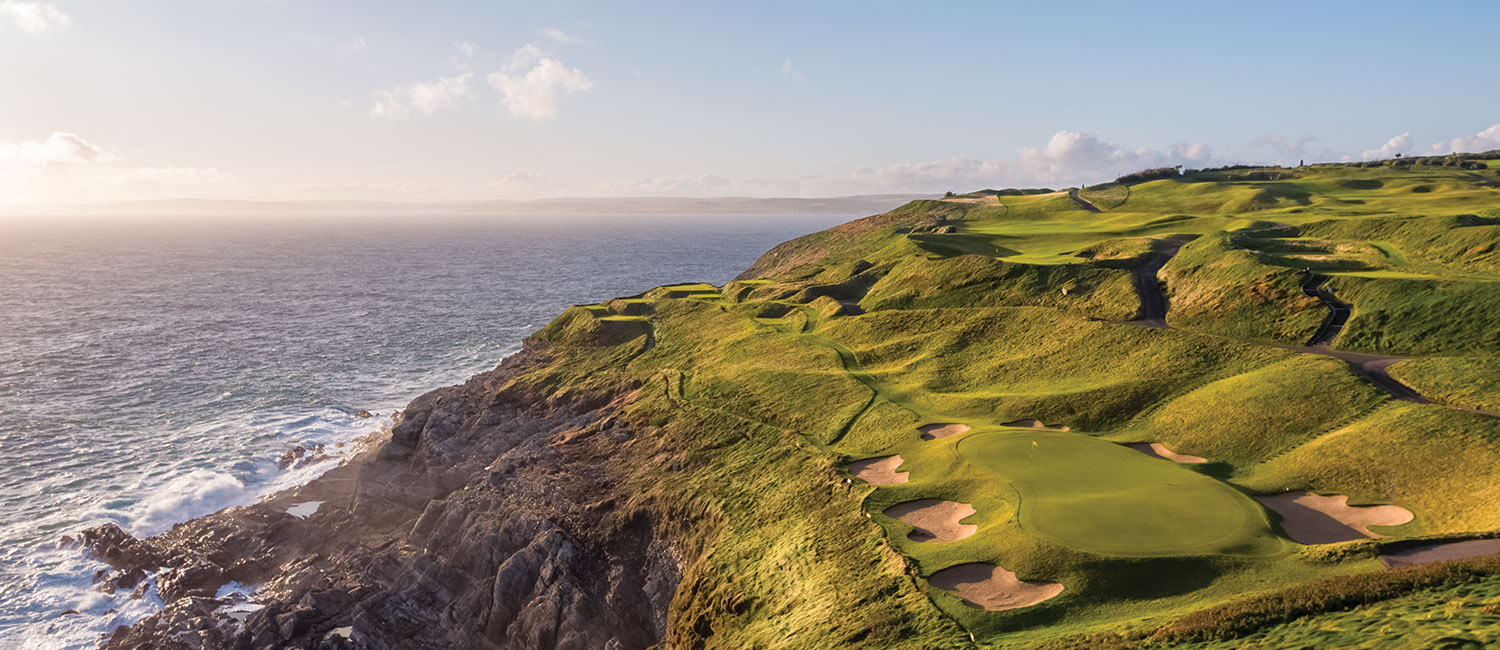
Before the course opened in 1997, this 220-acre site was already popular with ramblers, rock-climbers, ornithologists and whale watchers, and its imminent creation met with considerable local opposition. Now, more than two decades later, it seems the Old Head is regarded as a welcome source of employment and revenue by the indigenous population.
By arrangement, the public has access to the site today. “They know us and we know them and there’s never any problem,” says Jim O’Brien, the club’s long-serving general manager. “They’re always welcome.”
Complainers aside, the links’ other hostile opponent is salt water from high waves stripping grass off the greens, especially during the winter period when the course is closed (from the end of October to the end of March). But this problem has been largely resolved. “We eventually found a grass, developed in nurseries here, that was salt tolerant,” explains O’Brien. “Now we can look at the cosmetics of the place more.”
The Old Head is also one of few north European landmarks featured in a map by Greek astronomer Ptolemy in 100AD. An early lighthouse was established during the 17th century and the present version was built in 1853 and continuously manned until it became automated in 1987.
Nearby, the quaint harbor town of Kinsale, self-proclaimed as the ‘gourmet capital’ of Ireland, is a welcoming hub that’s well worth a couple of nights’ lingering.
Heading inland, north from Cork and east from Tralee, the golfing highlight near Limerick is Adare Manor where the original course, designed in 1995 by Robert Trent Jones Sr. (his last completed project), has been remodeled by Tom Fazio and bank-rolled by billionaire J.P. McManus. Reopened in April by an exhibition match involving McIlroy, Padraig Harrington, Paul McGinley and Shane Lowry, it is set in an 840-acre estate surrounding the medieval ruins of an Augustine abbey and Franciscan friary, and traversed by the meandering River Maigue. Continuing towards Dublin, our next port of call is the K Club. Straddling the River Liffey, which ultimately flows through the city of Dublin and into the Irish Sea, this is the elite home to two Palmer-designed layouts. The first course, which opened in 1991, was originally named the North while the second, the South, was completed in 2003. They hosted the European Open between them from 1995 to 2007 while in 2006 the Ryder Cup was staged over the North, by then renamed the Palmer Ryder Cup Course. The South was also rechristened as the Smurfit, after industrialist Dr. Michael Smurfit who owns the property.
The Palmer is a glorious parkland creation with an abundance of mature trees while the Smurfit has a contrastingly open, linksy appearance, rollercoaster undulations, wild grasses and gorse. Housed within Straffan House, which dates back to 550AD, the hotel is a hive of culture. After all, where else, while enjoying an aperitif, can you thumb through a copy of the Book of Kells or gaze at paintings by Jack B. Yeats, brother of the poet W.B. Yeats? In addition to golf, horse riding and fishing are other popular activities with guests of the K Club.
The K Club was in the vanguard of golf developments that sprang up around restored stately homes near Dublin during the final two decades of the past millennium, other notables being at Carton House, Druid’s Glen, Mount Juliet and Luttrellstown Castle. However, Mr. Palmer’s fond connection with this region dates back to 1960 when, as the reigning Masters and U.S. Open champion, he partnered Sam Snead to victory in the Canada Cup (now the WGC-World Cup of Golf) at Portmarnock Golf Club, a mighty links stationed on a peninsula just north of the Irish capital. The following week, he moved on to St. Andrews to make his debut in the [British] Open.
But the Republic is not the only proud possessor of a links pedigree in Ireland—just consider Ulster, in general, and Northern Ireland in particular.
In terms of scenery and hospitality, Northern Ireland has it all and golf, with apologies to the whiskey trade, is now the principal ingredient in this intoxicating cocktail.
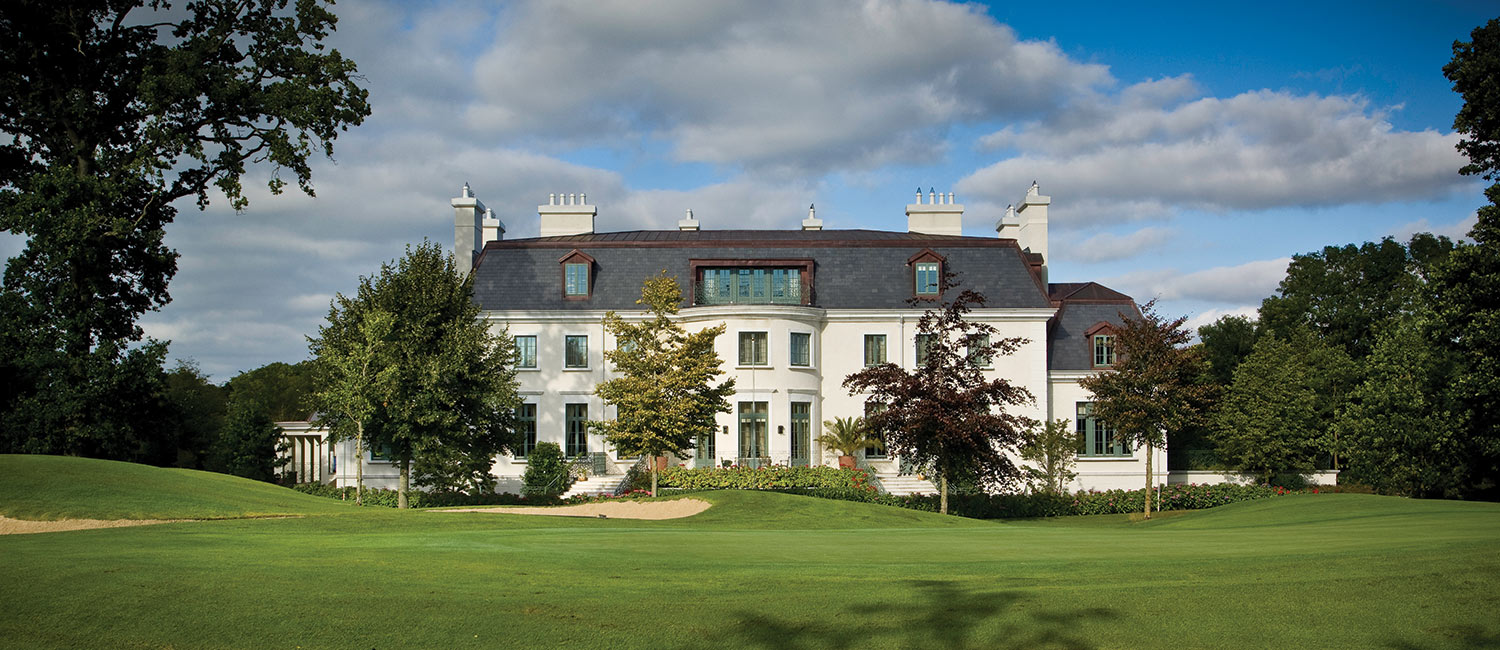
Straffan House is the private residence of K Club owner Dr Michael Smurfit, but the palatial 10-bedroom home is available for rent for $20,000 a night, with the service of the in-house butler, chef and domestic staff thrown in. Attention to detail is faultless to ensure this is the ultimate golfers’ retreat, with all meals, laundry and green fees included in the daily rate.
Sat squarely next to the 10th green of the K Club’s Ryder Cup course, Straffan House is superbly well equipped and presented, combining contemporary luxury and amenities with a classic French design influence, which subtly complements the character of the K Club’s main hotel (which is the original Straffan House, and itself inspired by a Parisien chateau).
Built over four stories (including basement), Straffan House has been created with fine living and entertainment at its core, from the stunning entrance hall, reception rooms and dining room, to the top-floor movie room, games room and spa.
The basement swimming pool is embellished by a hot tub and bar and decorated with hand-painted murals, with the house gym next door and climate-controlled wine cellar across the corridor.
The first floor, with the spacious dining and reception rooms, is characterized by high ceilings, tall windows, beautiful stucco work and glittering chandeliers.
kclub.ie/straffan-house
Moving north and across the border from Dublin, the first port of call has to be Royal County Down, 30 miles south of Belfast. Abutting Dundrum Bay and the town of Newcastle—“where the Mountains of Mourne sweep down to the sea”, according to songwriter Percy French—the Championship links was established in 1889 by ‘Old’ Tom Morris for the princely fee of four guineas (less than $6 at today’s conversion rate). Despite more lucratively rewarded changes in subsequent years by the two Harrys—Vardon and Colt—it still bears the hallmarks of its rustic origins, as does its shorter sibling, the Annesley Links.
Tight lies, imposing sand dunes, deep pot bunkers, gleaming heather and small undulating greens are not exclusive to the Championship layout, but few courses present so many blind shots and intimidating carries to such narrow fairways. White rocks are deployed as marker-posts to show the line and any waywardness is usually punished by thick rough. Factor in a fierce wind that often blows from off the Irish Sea and it’s clear keeping the ball in play, let alone in the right position, is a far-from-simple task.
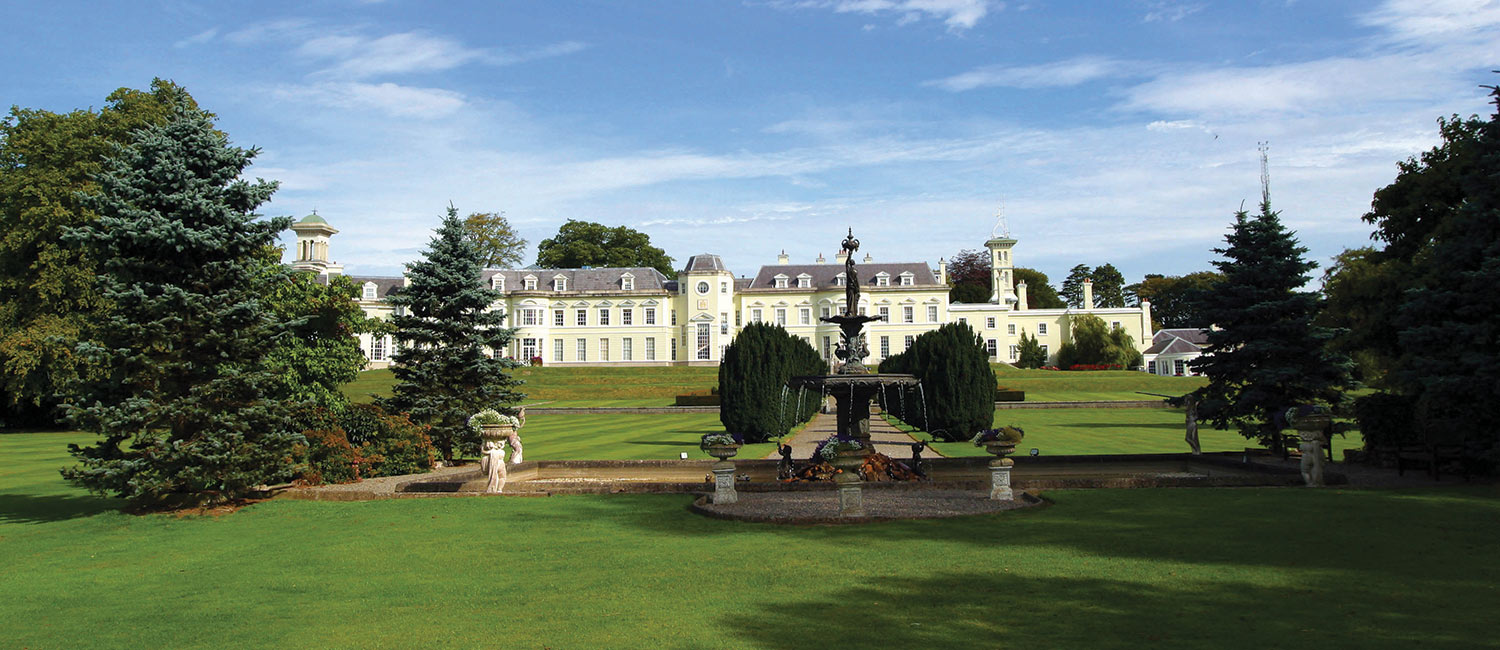
The signature hole is the par-four 9th (486 yards). The drive is uphill and blind to the highest point of the course. Reach that and not only do you have a chance of hitting the plateau green in two but also a grandstand view of Slieve Donard, the highest of the Mourne mountains.
But despite its magnificence, Royal County Down must, temporarily, take a back seat to Royal Portrush in golf-mad County Antrim where it seems every coastal inlet and estuary is dotted with flagsticks.
As mentioned, the Claret Jug will be up for grabs next year over the narrow fairways and elusive greens of Portrush. The only previous occasion the Dunluce Links (or anywhere else in Ireland, for that matter) has staged golf’s oldest Major was back in 1951, when the winner was England’s Max Faulkner, so it’s not surprising the locals are quite excited by its long-overdue return.
“This is a fantastic place to play golf and the people here are friendly and fully committed to the success of Royal Portrush,” said the club’s manager-secretary Wilma Erskine. “When I came here in 1984 we had many problems, but now we have more than 1,600 members, we attract a lot of visitors and we’ve got the [British] Open.
“We had to fight tooth and nail to bring it back, but we knew our infrastructure could cope. We have fantastic roads in and out of Portrush from all directions and there are 225,000 guest bedrooms, mostly within half an hour’s drive—more than enough to cope with the Open.”
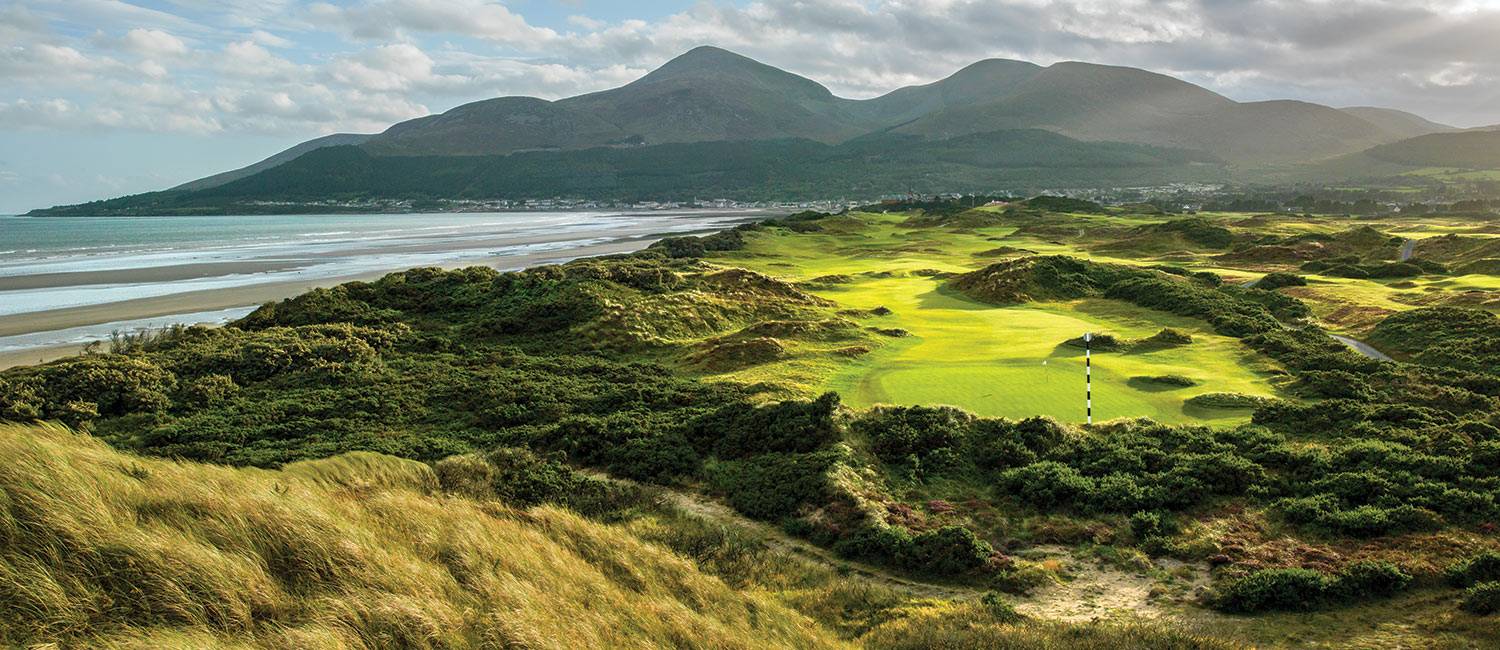
Touching Royalty
As Northern Ireland is a province of the United Kingdom it comes under the reign of the British Royal family and therefore its golf courses are eligible for Royal patronage, such as Royal County Down and Royal Portrush. The Republic of Ireland is not part of the UK and so Royal patronage is not applicable.
Four decades after the club teed off as County Antrim Golf Club in 1888, Colt created the Dunluce Links. Overlooked by the ruins of the 13th century Dunluce Castle, it stretches across a triangle of giant sand hills with views of County Donegal to the west, the southern Hebrides to the north, and the Giant’s Causeway to the east.
Portrush’s other 18-hole layout is the Valley Links, home to Rathmore Golf Club which has its own clubhouse and boasts McDowell and 1947 [British] Open champion Fred Daly among its alumni. The signature 14th here is a 210-yarder known as ‘Calamity’ because the tee shot has to bore through the prevailing wind to carry a yawning pit that falls dramatically away to the right.
Beyond Portrush there are plenty of other opportunities to play nearby, not least on the Strand course at Portstewart where Jon Rahm won the Irish Open last year.
The 1st tee on the Strand, high above a par-4 that doglegs right towards a green hidden behind rolling dunes, is as good as it gets—framed by a backdrop of windswept mountains. The view to the right towards the ocean takes in Harry’s Shack, a beachside seafood eaterie crowned Ireland’s restaurant of the year in 2014.
Other excellent courses nearby are Castlerock, on the mouth of the River Bann, and Ballycastle, where Scotland’s Mull of Kintyre is visible on a clear day.
As Ms Erskine stressed, there are accommodation options aplenty. Coleraine is the largest conurbation while Portrush and Portstewart are busy seaside towns. However, many visitors opt to stay in Bushmills, home to a famous whiskey distillery, a sumptuous selection of restaurants, headlined by the eponymous Bushmills Inn, and an array of Olde Worlde craft and clothes shops.
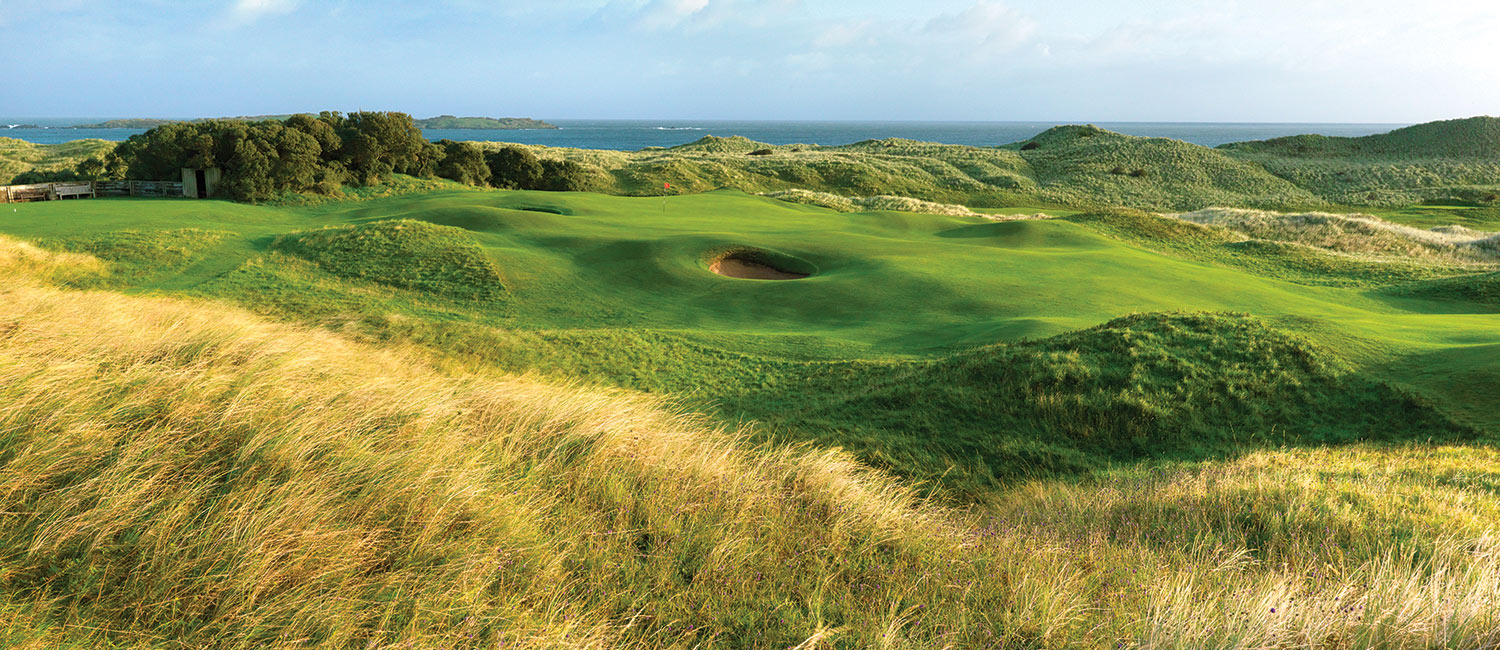
But golf north of Belfast is by no means confined to the coast. A few miles from Ballymena there’s Galgorm Castle, laid out in 1997 on the banks of the Maine and Braid rivers on an estate that dates back to 1618 when the castle—the ruins of which overlook the 10th green—was built by the quaintly titled Sir Faithful Fortescue.
Pride of place in the west of the province, though, must go to Lough Erne Resort near Enniskillen, County Fermanagh, a uniquely beautiful piece of golfing scenery.
This resort occupies a 600-acre peninsula between Lower Lough Erne and Castle Hume Lough, and is home to the Faldo links, a superb, waterside design (2009), and Castle Hume course which opened in the late 1990s. On the Faldo in particular, the views are stunning from every vantage point and water comes into play on at least 11 holes.
In such a short amount of space it has not been possible to mention every one of Ireland’s golfing jewels, but a tip of the hat is definitely due to an old journalist colleague, Pat Ruddy, who built and owns The European Club overlooking Brittas Bay, 20 miles south of Dublin in County Wicklow. Also in the early 1990s, Ruddy ventured into Donegal (the part that’s in the Republic) to design two mesmerizing links—the delightful Glashedy at Ballyliffin and the more rugged Sandy Hills at Rosapenna.
With legwork, it is perfectly possible to book hotels and tee times individually but if you are looking for an experienced specialist to take the strain and maximize precious vacation time NI Golf Tours are one of the best. Based a few miles from Royal County Down they offer bespoke itineraries to suit and are more than capable of securing tee times, arranging transport, and booking anything from accommodation to tours of distilleries and tables at Michelin star restaurants.
nigolftours.com
Follow Us On


| Cookie | Duration | Description |
|---|---|---|
| cookielawinfo-checkbox-analytics | 11 months | This cookie is set by GDPR Cookie Consent plugin. The cookie is used to store the user consent for the cookies in the category "Analytics". |
| cookielawinfo-checkbox-functional | 11 months | The cookie is set by GDPR cookie consent to record the user consent for the cookies in the category "Functional". |
| cookielawinfo-checkbox-necessary | 11 months | This cookie is set by GDPR Cookie Consent plugin. The cookies is used to store the user consent for the cookies in the category "Necessary". |
| cookielawinfo-checkbox-others | 11 months | This cookie is set by GDPR Cookie Consent plugin. The cookie is used to store the user consent for the cookies in the category "Other. |
| cookielawinfo-checkbox-performance | 11 months | This cookie is set by GDPR Cookie Consent plugin. The cookie is used to store the user consent for the cookies in the category "Performance". |
| viewed_cookie_policy | 11 months | The cookie is set by the GDPR Cookie Consent plugin and is used to store whether or not user has consented to the use of cookies. It does not store any personal data. |